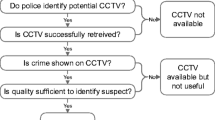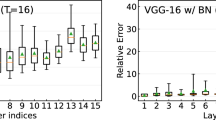Abstract
The origin information of an image is important in image forensic area. One of the most effective methods to link an image to its source camera is the sensor-based camera source identification (CSI). However, recent studies show that the signature that CSI based on can be easily removed or substituted, which questioned the credibility of the CSI results. To rebuild the credibility of the CSI method, in this paper, we introduce a simple yet effective countermeasure against potential attacks based on noise level estimation. Experimental results show the ability of the proposed method to capture the traces left by anti-forensic methods. Take into account the low complexity, the proposed method is very suitable to be a patch on the traditional CSI method.









Similar content being viewed by others
References
Bayram S, Sencar H T, Memon N D (2012) Efficient sensor fingerprint matching through fingerprint binarization. IEEE Trans Information Forensics and Security 7 (4):1404–1413
Caldelli R, Amerini I, Novi A (2011) An analysis on attacker actions in fingerprint-copy attack in source camera identification. Information Forensics and Security (WIFS), 2011 IEEE International Workshop on, pp 1–6
Chen M, Fridrich J, Goljan M, Lukas J (2008) Determining image origin and integrity using sensor noise. IEEE Trans Information Forensics and Security 3(1):74–90
Cortiana A, Conotter V, Boato G, Natale FGB (2011) Performance comparison of denoising filters for source camera identification . In: Proc. of SPIE, SPIE 7880:788007-788007-6
Gloe T, Bohme R (2010) The dresden image database for benchmarking digital image forensics. Journal of Digital Forensic Practice 3(2-4):150–159
Gloe T, Kirchner M, Winkler A, Bohme R (2007) Can we trust digital image forensics? Multimedia ’07. In: Proceedings of the 15th international conference on Multimedia. pp. 78–86
Goljan M (2009) Digital camera identification from images-estimating false acceptance probability. In digital watermarking. In: Kim H, Katzenbeisser S, Ho AT (eds) Lecture notes in computer science, vol 5450. Springer Berlin, Heidelberg, pp 454–468
Goljan M, Fridrich J (2008) Camera identification from cropped and scaled images. In: Proc. of SPIE. Electronic Imaging, SPIE vol. 6819
Kang X, Li Y, Qu Z, Huang J (2012) Enhancing source camera identification performance with a camera reference phase sensor pattern noise. IEEE Trans Information Forensics and Security 7(2):393–402
Li C T (2010) Source camera identification using enhanced sensor pattern noise. IEEE Trans Information Forensics and Security 5(2):280–287
Li CT, Chang C, Li Y (2010) In: Weerasinghe D (ed) On the repudiability of device identification and image integrity verification using sensor pattern noise. ISDF2009, LNICST 41, 19-25
Li H, Luo W (2014) Anti-forensics of double JPEG compression with the same quantization matrix. Multimed Tools Appl, Huang, J
Ling H, Wang L, Zou F, Yan W (2011) Fine-search for image copy detection based on local affine-invariant descriptor and spatial dependent matching. Multimed Tools Appl 52:551–568
Liu X, Tanaka M, Okutomi M (2012) Noise level estimation using weak textured patches of a single noisy image. IEEE Int. Conf. Image Processing, Orlando, USA, pp 665–668
Lukas J, Fridrich J, Goljan M (2006) Digital camera identification from sensor noise. IEEE Trans Information Forensics and Security 1(2):205–214
Rao Q, Li H, Luo W, Huang J (2013) Anti-forensics of the triangle test by random fingerprint-copy attack. In: Proc. of Computational Visual Media Conference, Hangzhou, 2013, pp 1–6
Van Houten W, Geradts Z (2013) Using anisotropic diffusion for efficient extraction of sensor noise in camera identification. J Forensic Sci 57:521–527
Acknowledgements
The authors would like to thank the authors of [11] for discussing the anti-forensic schema. The authors also would like to thank the anonymous reviewers for their helpful comments.
Author information
Authors and Affiliations
Corresponding author
Rights and permissions
About this article
Cite this article
Zeng, H. Rebuilding the credibility of sensor-based camera source identification. Multimed Tools Appl 75, 13871–13882 (2016). https://doi.org/10.1007/s11042-015-3072-9
Received:
Revised:
Accepted:
Published:
Issue Date:
DOI: https://doi.org/10.1007/s11042-015-3072-9




